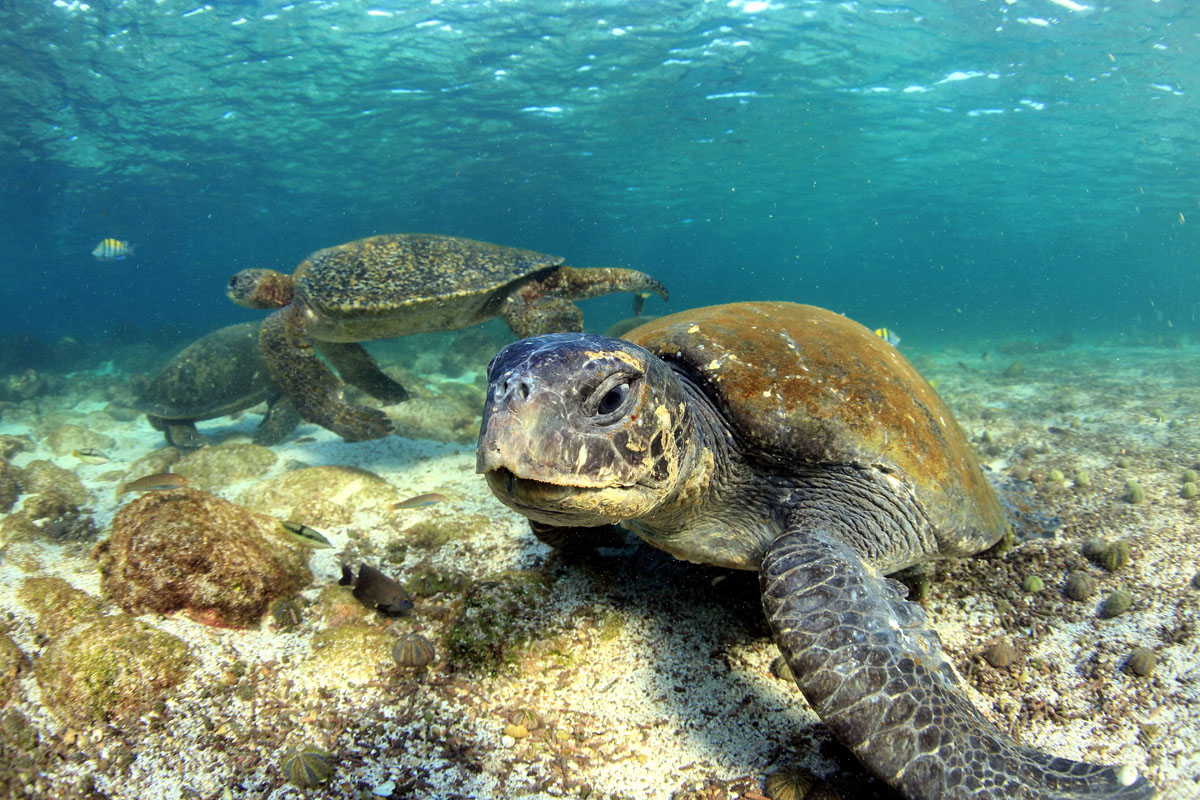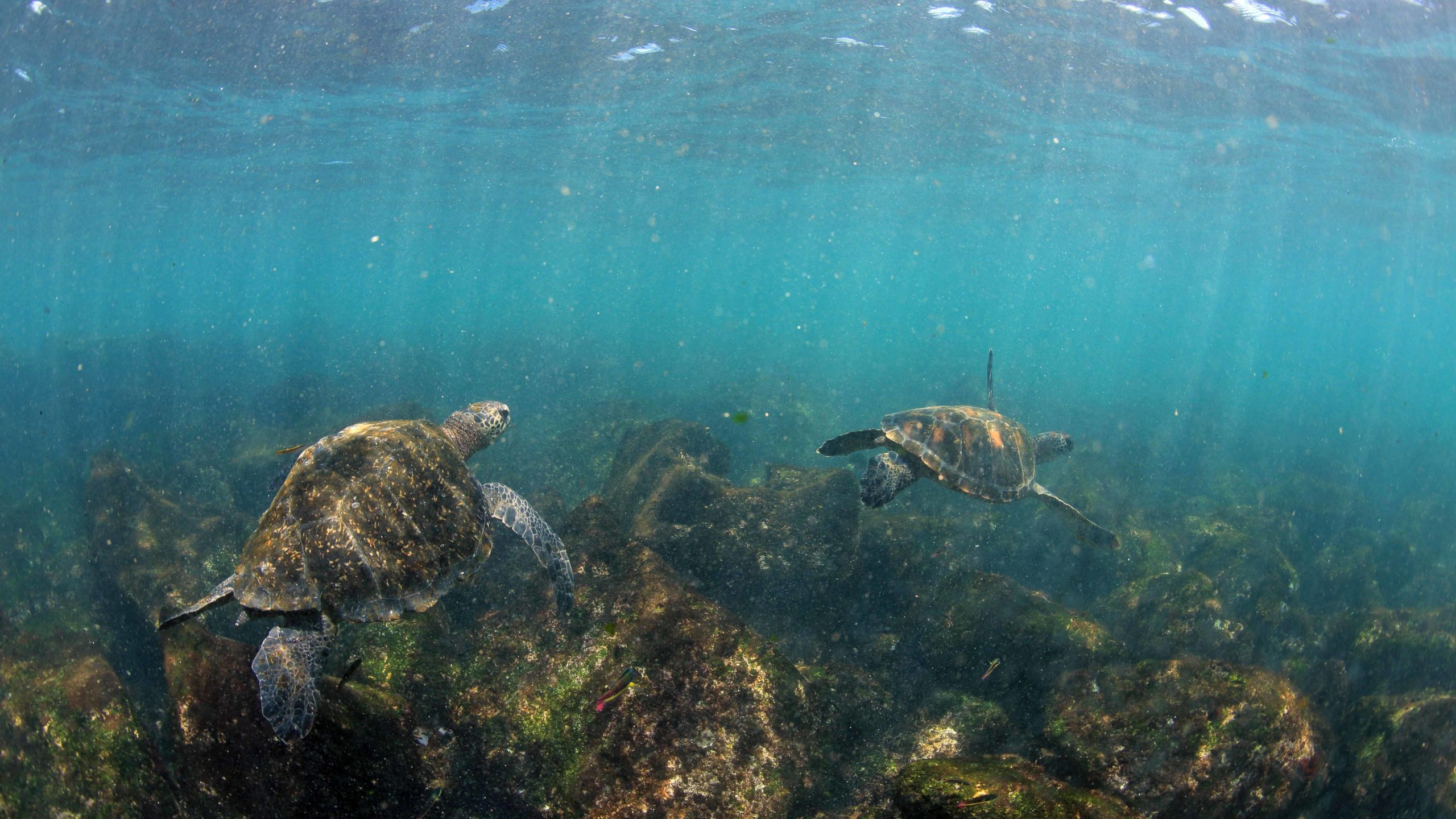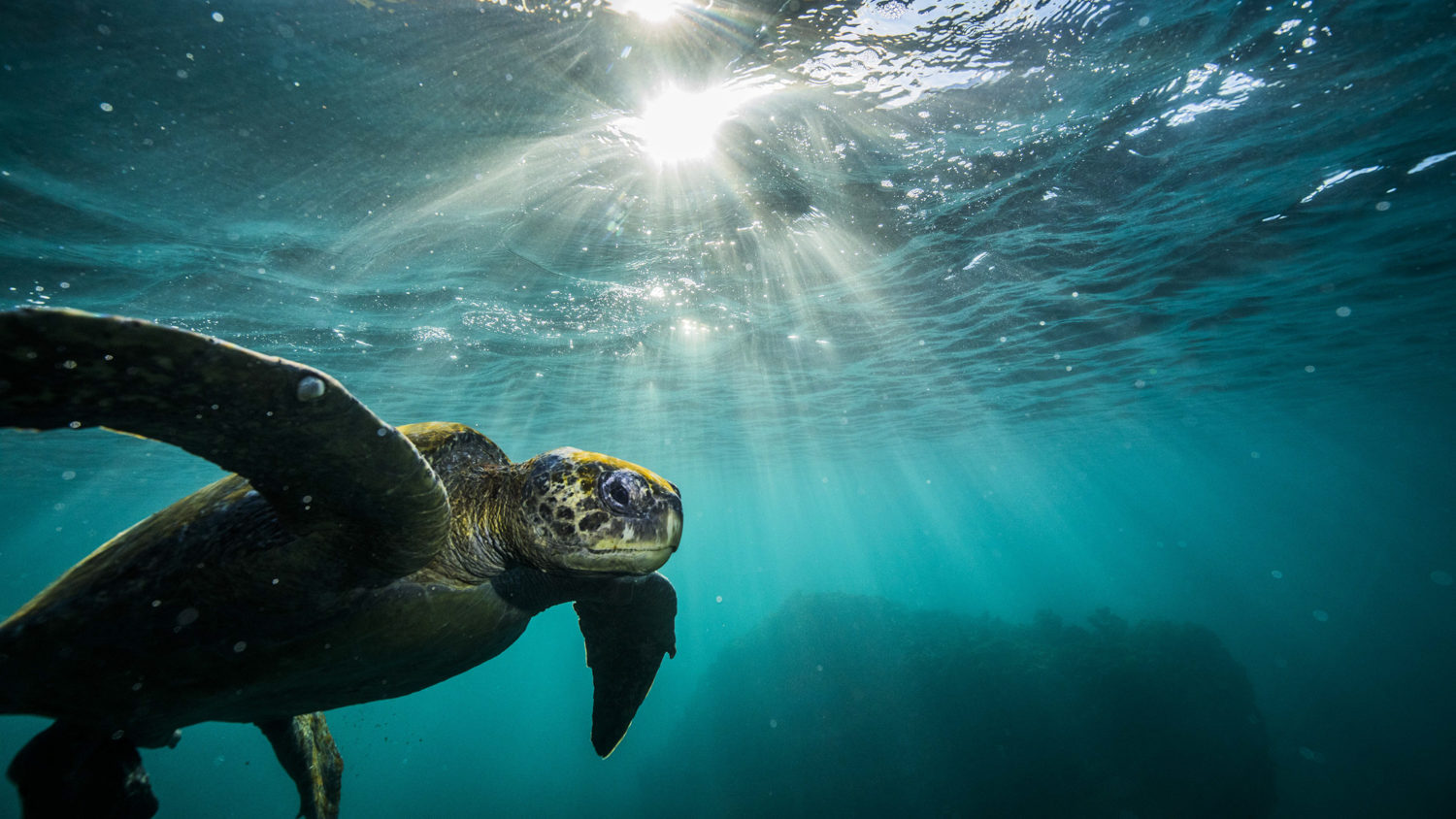June 13, 2025
Swim with Sea Turtles in the Galapagos: Best Spots and A Glimpse Into Their World

Swimming With Sea Turtles in the Galapagos: A Bucket-List Wildlife Moment
Spotting a sea turtle gliding effortlessly through crystal-clear Galapagos waters is one of those travel moments that stays with you. Whether you’re snorkeling off Isabela or simply observing them while kayaking or from the shore, these ancient mariners offer a peaceful, awe-inspiring encounter with nature. In this guide, we’ll share everything you need to know about sea turtles in the Galapagos, from where to see them to how to be a respectful visitor in their ocean home.
Meet the Galapagos Sea Turtle

The most commonly seen sea turtle in the Galapagos is the Pacific green sea turtle (Chelonia mydas agassizii), which is considered a subspecies of the green sea turtle. These turtles can grow over 1.5 meters long and weigh up to 180 kilograms. With a lifespan of up to 80 years, they spend most of their lives in the ocean, only coming ashore briefly to nest. The Galapagos is one of the few places where they are frequently seen while snorkeling.
In addition to the Pacific green sea turtle, three other species have been recorded in Galapagos waters:
- Olive ridley turtle (Lepidochelys olivacea) – Rarely seen, but occasionally visits the region.
- Leatherback turtle (Dermochelys coriacea) – The largest of all sea turtles; sightings are extremely rare.
- Hawksbill turtle (Eretmochelys imbricata) – Critically endangered and very uncommon in the Galapagos, learn more about their travel patterns in this study.
While most travelers will encounter the Pacific green sea turtle during their trip, knowing that other species exist adds to the ecological richness of the islands.
Where and When to See Sea Turtles
Sea turtles can be seen year-round in the Galapagos. While they do nest in the islands, witnessing nesting is very rare, as it typically occurs at night in remote areas.
Nesting season for Pacific green sea turtles generally occurs between December and March, when females come ashore to lay their eggs.
Hatchlings begin emerging from nests around February to May, usually at night, and quickly make their way to the ocean. This early stage of life is incredibly vulnerable, with many hatchlings facing predators before they reach the sea.
Most visitors will see turtles while snorkeling or swimming in calm bays and protected coves.
Top snorkeling spots for turtle sightings include:
- Los Túneles (Isabela) – Calm waters and lava formations make this a top site.
- Las Tintoreras (Isabela) – Shallow channels offer clear views of sea turtles.
- Concha de Perla (Isabela) – An easy-access snorkel site with frequent sea turtle encounters.
- La Lobería (San Cristóbal) – Great for beginner snorkelers.
- Kicker Rock (San Cristóbal) – A dramatic snorkeling and diving site where sea turtles are often seen alongside rays and sharks.
- Gardner Bay (Española) – Beautiful beach with frequent turtle encounters.
- Santa Fe and Punta Cormorant – Known for turtle sightings and vibrant marine life.
Snorkeling With Sea Turtles

One of the most magical experiences in the Galapagos is watching a sea turtle glide past you while you float just a few feet away. They are generally calm and unbothered by snorkelers, provided you keep a respectful distance. Always let the turtle come to you, never chase or touch them, and give them space to surface for air.
Guests on Galakiwi tours often mention this as one of their trip highlights. There’s something profoundly moving about being eye-to-eye with a creature that has roamed the oceans since the age of dinosaurs.
Conservation and Your Role
Sea turtles in the Galapagos face several threats, including marine debris, rising ocean temperatures, and habitat disturbance. Thankfully, the Galapagos National Park and local organizations are actively involved in protecting nesting sites and monitoring turtle populations.
You can help by:
- Using reef-safe sunscreen.
- Avoiding single-use plastics.
- Following all snorkeling guidelines.
- Supporting operators committed to sustainable tourism.
Fun Facts About Galapagos Sea Turtles
- They can hold their breath for several hours while resting.
- Hatchlings face many predators, with only a small fraction reaching adulthood.
- They are herbivores, feeding mostly on seagrasses and algae.
- Their shell color can change with age and environment.
A Peaceful Highlight of Your Galapagos Adventure
Encountering a sea turtle in the wild is more than just a photo opportunity—it’s a moment of connection with one of nature’s most graceful and enduring creatures. In the Galapagos, these encounters often happen while snorkeling in calm waters, making it accessible to travelers of all ages and experience levels.
If you’re dreaming of an unforgettable wildlife experience, snorkeling with sea turtles in the Galapagos is an experience that will stay with you long after your trip ends.
Ready to meet them? Join us on a land-based Galapagos adventure that brings you face-to-face with turtles, sea lions, marine iguanas, and more, all while supporting responsible travel in one of the world’s most iconic ecosystems.
